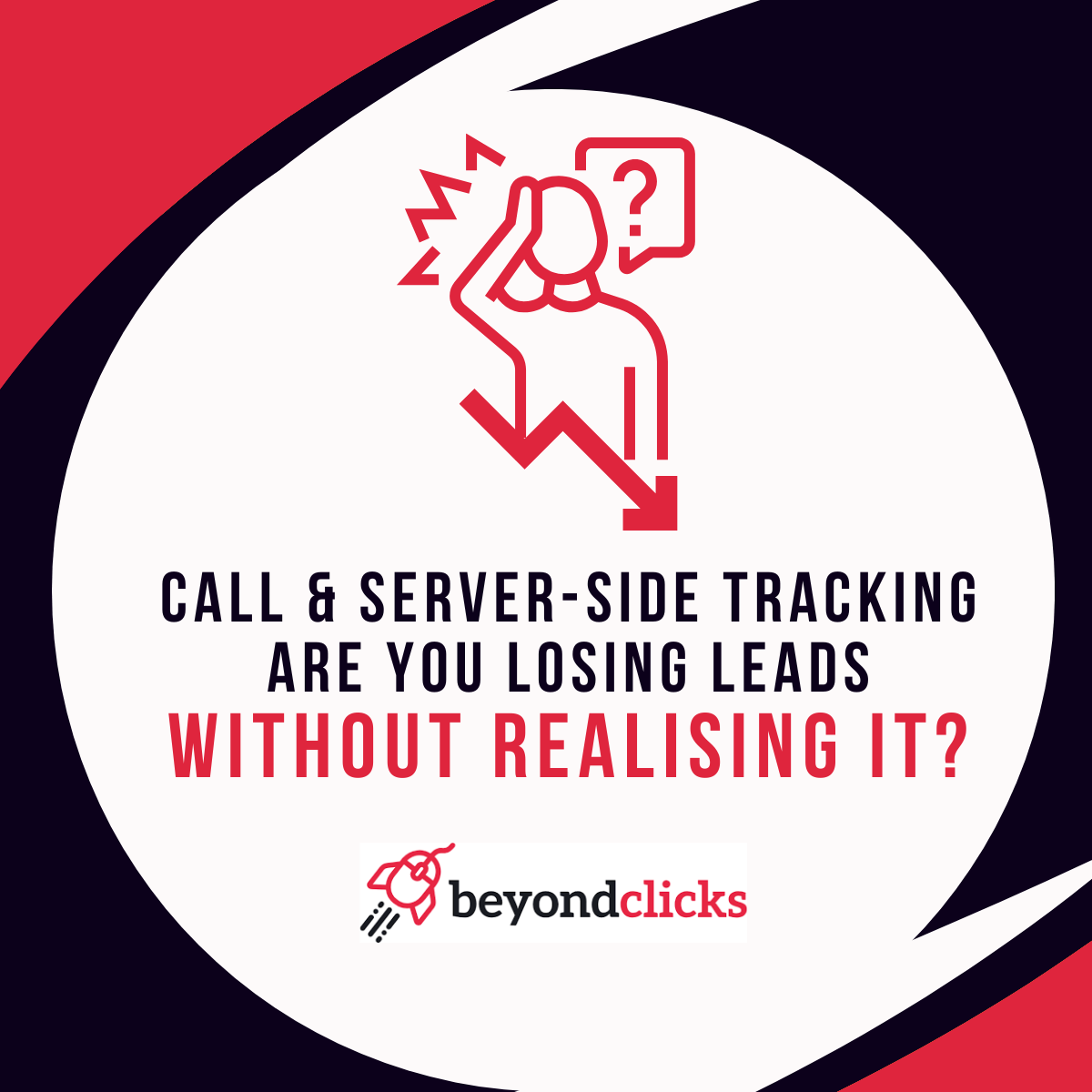How Call Tracking & Server-Side Tracking Can Transform Your Marketing
If you’re running PPC, SEO, or paid social campaigns but struggling to track conversions properly, you’re probably losing leads without realising.
Many businesses still rely on outdated tracking methods that don’t capture the full customer journey. Here’s why that’s a problem:
✅ Missing Data: If someone calls your business after clicking an ad, but there’s no call tracking in place, you won’t know where that lead came from.
✅ Ad Budget Waste: Without accurate tracking, you might be scaling the wrong campaigns while pausing the ones that are actually bringing in revenue.
✅ Inaccurate Reporting: With browser-based tracking becoming less reliable due to iOS updates and cookie restrictions, many businesses are underreporting conversions.
The Fix: Call Tracking & Server-Side Tracking
🔹 Call Tracking: Every phone call generated from your website or ads are logged and attributed to the exact source (Google Ads, Facebook, SEO, etc.), giving you a true picture of ROI.
The Impact:
One of our insurance broker clients thought their Google Ads weren’t delivering calls. After implementing call tracking, we showed them that 57% of their leads were actually coming from PPC – they just weren’t tracking them properly, We work with a number of call tracking partners, our preferred partner is Infinity.
🔹Server-Side Tracking: Traditional tracking uses data gathered by the user’s web browser which is then sent to third party servers.
Server-Side Tracking changes this process by having the website’s own server collect and process the data.
Because of the UK’s strong emphasis on data privacy (GDPR), server-side tracking is becoming and will be increasingly important to businesses. Why?
- To maintain accurate data insights
o Allows better marketing and business decisions.
- Ensure compliance.
o Easier and more robust to comply with data protection laws.
- Builds trust with users.
o Shows and demonstrates a high commitment to data privacy.
What are the limitations with traditional “client-side” tracking?
- Accuracy
o Susceptible to ad blockers, browser privacy settings and tracking prevention tools. This leads to inaccurate and incomplete data.
- Privacy
o Less control over data handling, which can raise privacy concerns as data is directly shared with third parties.
- Performance
o Code for client-side tracking can slow down website loading times.
How does server-side tracking compare?
- Improved Accuracy
o Less affected by ad blockers and tracking prevention tools, resulting in more complete and reliable data.
- Enhanced Privacy
o Greater control over data handling = enabling better compliance with privacy regulations = builds user trust.
- Better Performance
o Reduces the load on a user’s browser, leading to faster load speeds and a better user experience.
As we head further into 2025 and beyond, tracking data client-side is only going to get harder as more and more companies adopt ad blockers and even greater intelligent tracking prevention, leading to significant data loss and making it harder to understand user behaviour and measure your marketing effectiveness.
Start server-side tracking to:
- Maintain accurate and reliable data insights.
- Ensure compliance with data privacy regulations.
- Improve website performance and user experience.
- Future proof your data strategy and to stay competitive.
💡 If you’re spending money on marketing but aren’t sure what’s working, it’s time to get tracking right. If you would like to discuss this further, please get in touch.
